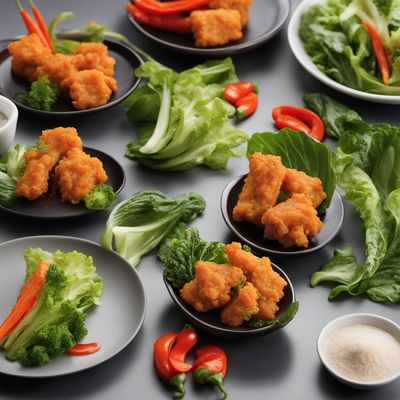
Ingredient
Chinese chives
The Versatile Herb: Unveiling the Secrets of Chinese Chives
Chinese chives are slender, flat, and dark green in color, with a mild garlic-like aroma. They have a delicate yet distinct flavor, combining the pungency of garlic with the freshness of chives. The leaves are tender and slightly chewy, while the white stalks offer a crisp texture. Chinese chives add a vibrant touch to dishes and are often used as a garnish or incorporated into stir-fries, dumplings, soups, and omelets.
Origins and history
Chinese chives have a rich history dating back thousands of years in China. They are believed to have originated in Siberia and gradually spread to other parts of Asia. Chinese chives have been cultivated and used in Chinese cuisine for centuries, valued for their medicinal properties and culinary versatility.
Nutritional information
Chinese chives are low in calories and rich in essential nutrients such as vitamins A, C, and K. They also contain minerals like calcium, iron, and potassium, making them a nutritious addition to meals.
Allergens
Chinese chives are generally safe for consumption and are not commonly associated with allergies. However, individuals with allergies to other members of the Allium family, such as onions or garlic, may also be sensitive to Chinese chives.
How to select
When selecting Chinese chives, look for fresh, vibrant green leaves and firm, crisp stalks. Avoid any signs of wilting, yellowing, or sliminess. The leaves should be free from blemishes or discoloration. Opt for organically grown chives whenever possible to ensure the absence of pesticides.
Storage recommendations
To maintain the freshness of Chinese chives, trim the ends and store them in a plastic bag or airtight container in the refrigerator. They can be kept for up to a week. Alternatively, you can place the chives in a glass of water, covering the leaves with a plastic bag, and refrigerate for extended freshness.
How to produce
Chinese chives can be easily grown in home gardens or containers. They thrive in well-drained soil and require ample sunlight. Sow the seeds in early spring or late summer, keeping the soil moist until germination. Regularly harvest the leaves to encourage growth and prevent flowering, as the flowers can diminish the flavor.
Preparation tips
Chinese chives can be used in various ways. Finely chop them and add to stir-fries, soups, or omelets for a burst of flavor. They can also be used as a garnish for noodles, rice dishes, or salads. To preserve their delicate flavor, add Chinese chives towards the end of the cooking process. Additionally, blanching the chives briefly in boiling water can help reduce their pungency.
Substitutions
If Chinese chives are not available, you can substitute them with regular chives or green onions, although the flavor profile will differ slightly.
Culinary uses
Chinese chives are widely used in Chinese cuisine, adding a distinct flavor to dishes such as dumplings, pancakes, and stir-fried noodles. They are also commonly used as a garnish for soups, salads, and seafood dishes.
Availability
Chinese chives are commonly available in China, other parts of Asia, and in Asian grocery stores worldwide.
More ingredients from this category
Recipes using Chinese chives

Chiuchow-style Pancakes
Savory Chiuchow Pancakes: A Fusion of American and Chiuchow Flavors

Hubei-style Meitschibei
Savory Hubei Delight: Meitschibei with a Local Twist

Sichuan-style Spicy Pizza Margherita
Fiery Fusion: Sichuan-inspired Spicy Pizza Margherita

Chinese-style Gyoza
Savory Chinese Dumplings: A Twist on Gyoza

Haipai-style Mixed Vegetable Tempura
Crispy Delights: Haipai Mixed Vegetable Tempura
